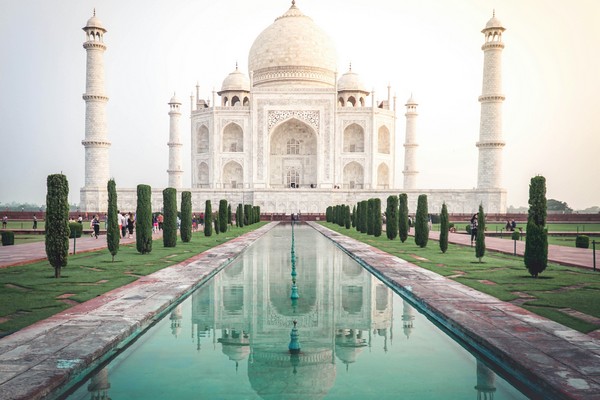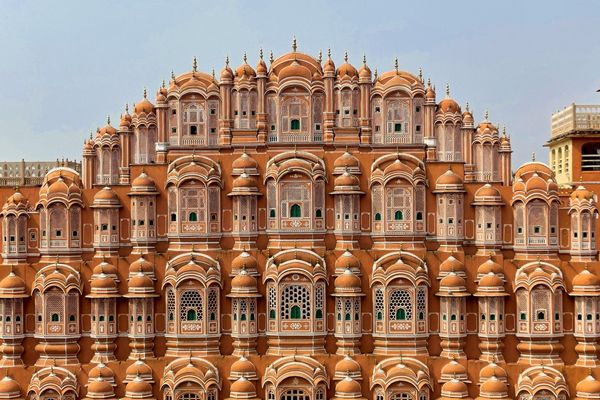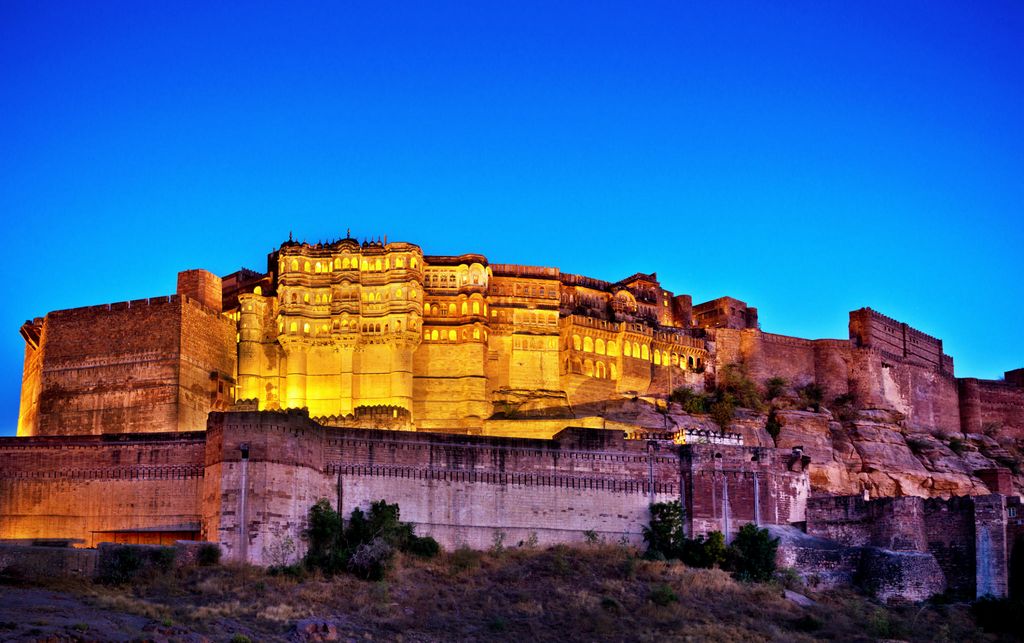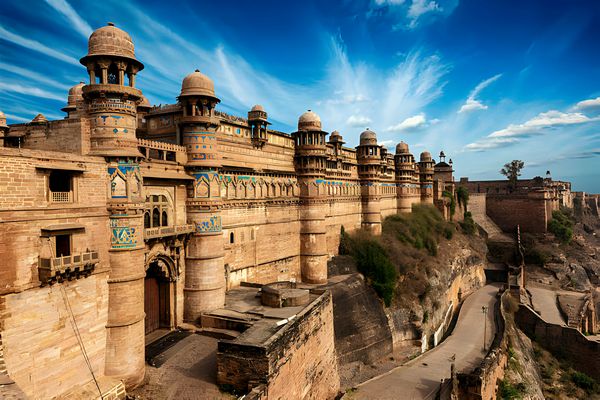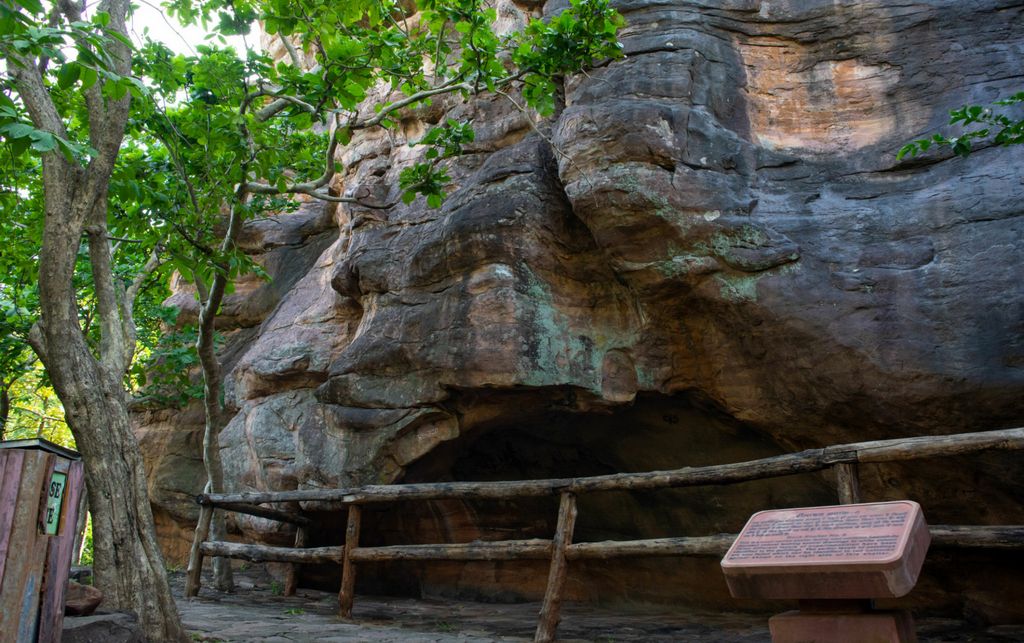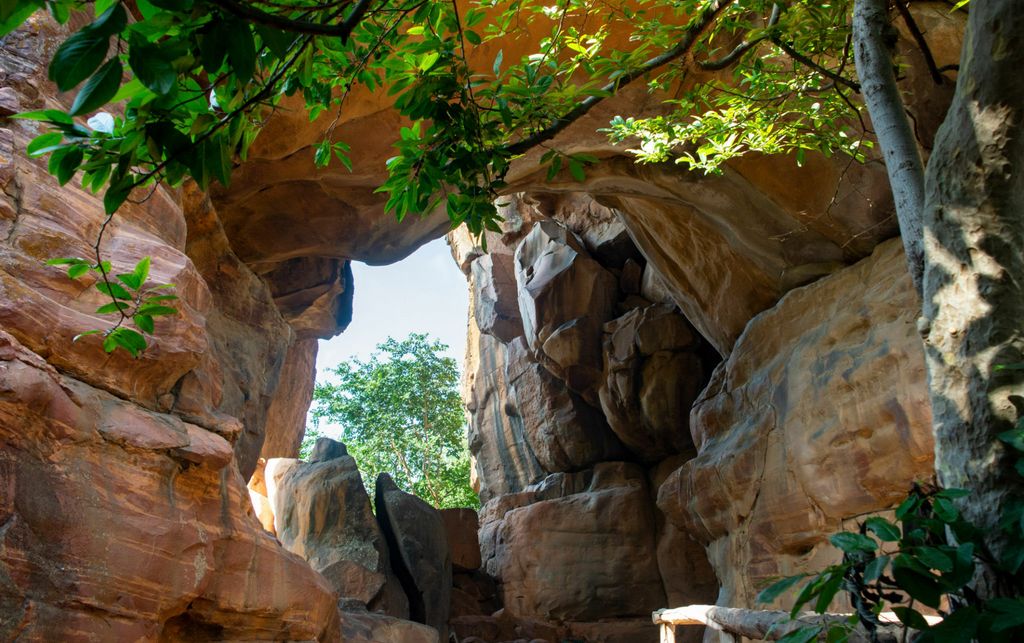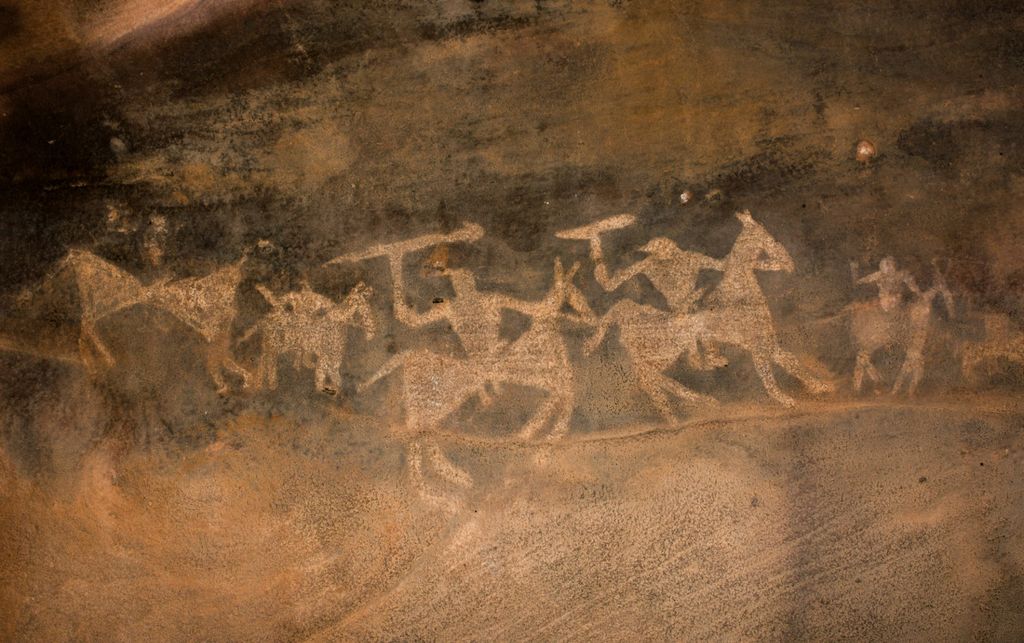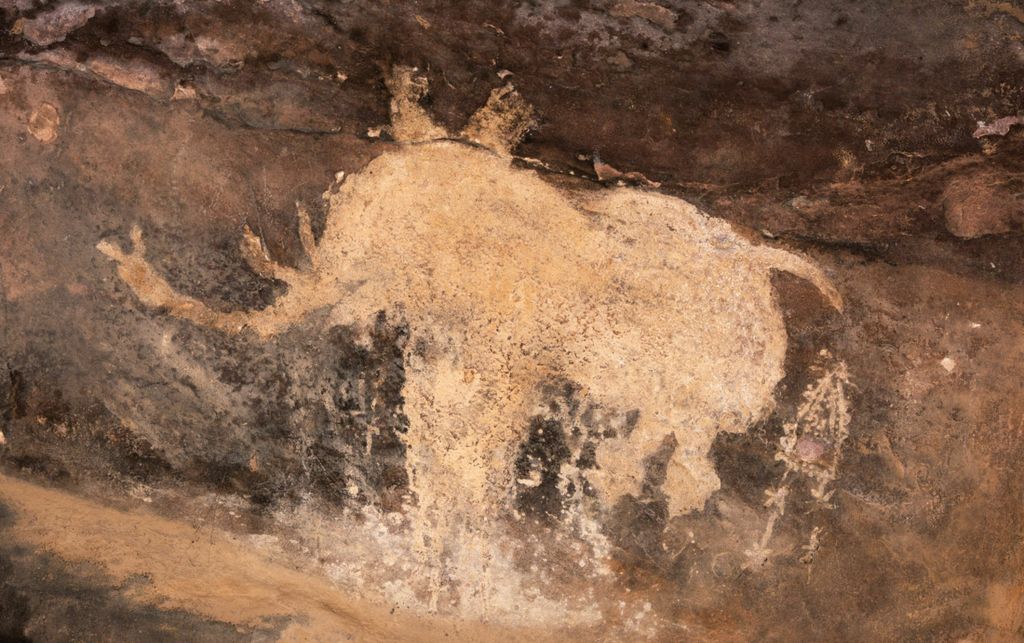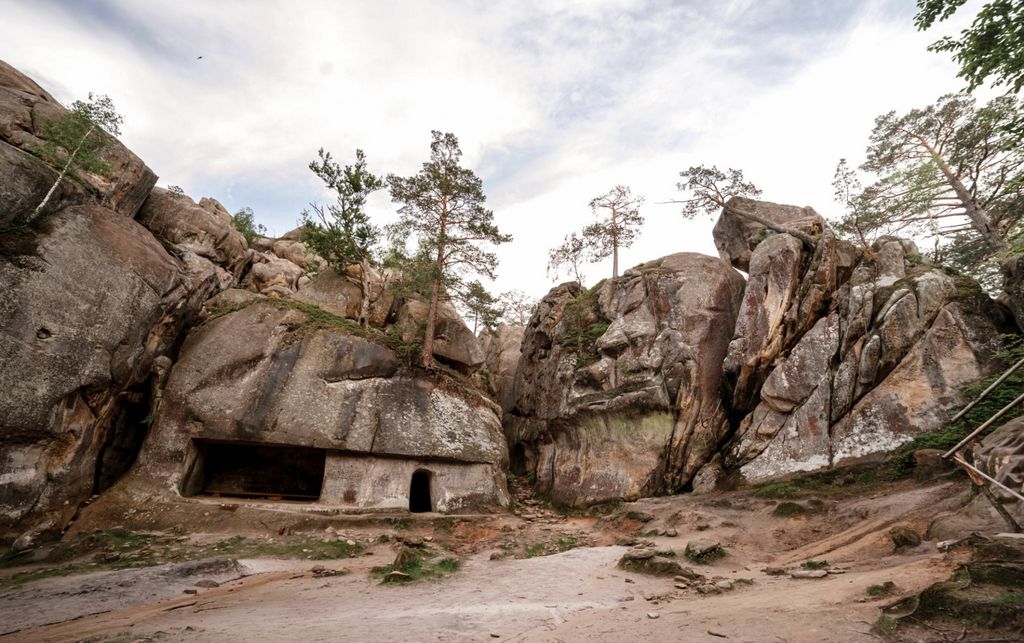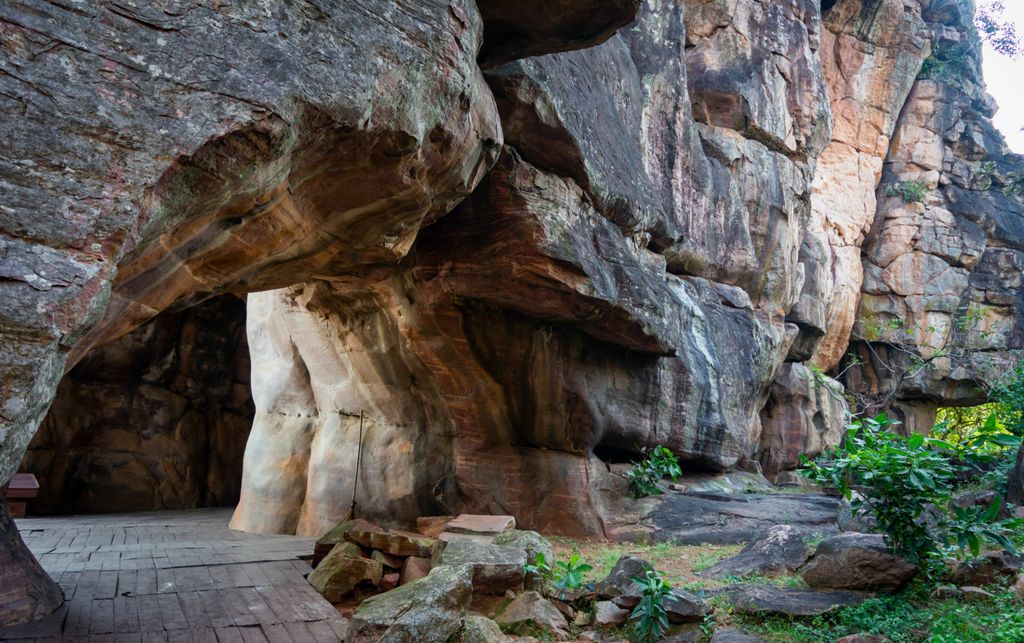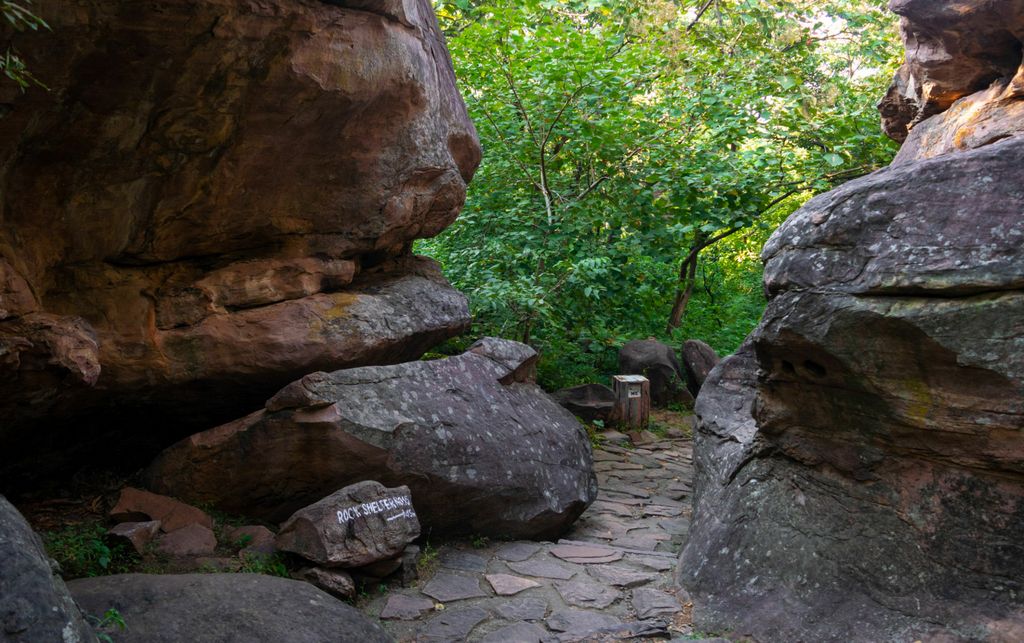Introduction: A Natural Marvel and Historical Enigma
Nestled within the undulating terrains and dense foliage of the ancient Vindhyachal ranges, the Bhimbetka Rock Shelters, a UNESCO World Heritage Site stand as silent witnesses to the enigmatic narrative of human civilization. Situated approximately 45 kilometers northeast of Bhopal, the capital city of Madhya Pradesh, these rock shelters form a mesmerizing tableau along the Bhopal-Hoshangabad highway, near the quaint village of Bhiyapura in the Raisen district.
The grandeur of these shelters, shielded by colossal rocks, creates an immersive experience, where ancient history and natural splendor intertwine seamlessly. Even from distant viewpoints like Obaidullaganj, these caves evoke a sense of wonder, inviting travelers to delve into an era shrouded in the mystique of antiquity.
Origin and Mythological Connections
The origin of Bhimbetka Rock Shelters is intertwined with captivating mythological connections that echo the legendary tales of the Indian epic Mahabharata. Named after Bhima, the second of the Pandava brothers, these rock shelters bear a mythological link to the fabled period of the Pandavas’ exile. According to local folklore, during their banishment, the Pandavas sought refuge within these caves, finding shelter amidst the colossal rocks that define the landscape.
The surrounding geographical features and nearby village names, such as Pandapur and the speculated distortion of Bhimpura into Bhiyapura, further add weight to this myth. While concrete evidence supporting these claims remains elusive, the echoes of Mahabharata lore continue to intertwine with the mystique surrounding Bhimbetka, infusing the site with an aura of myth and history.
Discovery: Unraveling an Archaeological Marvel
The discovery of the Bhimbetka Rock Shelters in 1957-58 marked an accidental yet momentous chapter in the annals of archaeological exploration. Dr. Vishnu Wakankar, a pioneering archaeologist from Vikram University, Ujjain, stumbled upon this ancient trove of human history by chance during his explorations. Straying from the beaten path, Dr. Wakankar found himself amidst the rocky terrain of Bhimbetka, unaware that his footsteps would lead to an extraordinary archaeological revelation.
As he ventured deeper into this terrain, he unearthed a remarkable repository of prehistoric treasures. These serendipitous findings led to extensive excavations that revealed a continuum of historical remnants spanning from the Lower Palaeolithic Age to the Early Medieval Ages, unraveling the wealth of ancient human civilization tucked within the recesses of Bhimbetka’s rock shelters.
Preserving Millennia-old Expressions: Bhimbetka’s Rock Art
Bhimbetka’s rock art stands as an invaluable repository of millennia-old expressions, preserving the artistic legacy of ancient civilizations. These ancient canvases, painted over 15,000 years ago, adorn the walls of the rock shelters, encapsulating the essence of prehistoric life. The artistry, executed predominantly in vibrant red and white pigments derived from natural minerals, unveils a vivid tapestry of human existence across epochs. Scenes depicting hunting expeditions, communal rituals, dancing, animal fights, and religious symbols offer captivating insights into the socio-cultural fabric and daily lives of ancient societies.
The rock art not only serves as a visual record but also as a testament to the ingenuity, storytelling prowess, and artistic sensibilities of our early ancestors, showcasing their remarkable ability to capture and communicate their world through the medium of cave paintings.
Themes and Depictions: Insights into Ancient Societies
Bhimbetka’s rock art presents an extensive array of themes and depictions that offer a mesmerizing glimpse into ancient life and human creativity. Spread across the rock shelters, these prehistoric artworks showcase a rich tapestry of scenes and motifs. The paintings depict an assortment of subjects, from hunting scenes and communal rituals to dancing ceremonies and intricate patterns. Animals such as bison, tigers, elephants, and various bird species frequently feature in these artworks, alongside human figures engaged in activities like hunting, dancing, and everyday communal life.
The use of vibrant red, white, green, and yellow hues, derived from minerals and natural sources, breathes life into these ancient canvases. These depictions not only highlight the artistic finesse of our ancestors but also provide a captivating window into their cultural practices, societal dynamics, and the natural environment that surrounded them, offering a rich and nuanced portrayal of ancient life and traditions.
Chronology and Evolution of Artistry
The rock art found at Bhimbetka offers a fascinating chronology and evolution of artistic styles spanning various historical periods. Classified into distinct phases based on style, subject matter, and execution techniques, Bhimbetka’s rock art chronicles the evolution of human expression over time. From the Upper Palaeolithic period with its linear representations of animals like bisons and boars alongside stick-like human figures to the Mesolithic era showcasing more stylized and smaller-sized figures adorned with linear decorations, the artistry progressively evolves.
The Chalcolithic period demonstrates the interaction and exchange between cave dwellers and agricultural communities, reflecting on the artworks. The transition to the Early Historic and Medieval periods portrays more schematic and decorative styles, with depictions of riders, religious symbols, and evolving artistic techniques. These stylistic changes and thematic evolution across different epochs at Bhimbetka offer a compelling narrative of the development and transformation of human creativity and cultural expressions over thousands of years.
Beyond Art: Archaeological Remnants and Human Evolution
Bhimbetka transcends its reputation solely as an art repository, offering a rich tapestry of archaeological remnants that shed light on human evolution and ancient civilizations. Beyond the captivating rock paintings, the site boasts a plethora of archaeological treasures. Ruined citadels, Buddhist stupas, inscriptions spanning historical periods, and an assortment of stone tools signify a continuum of human habitation dating back to the lower Palaeolithic era.
These artifacts, meticulously excavated from the site, provide invaluable insights into the progressive changes and adaptations in the lifestyles of prehistoric humans. The tools unearthed at Bhimbetka showcase the evolution of implements, progressing from primitive unworked ones to more sophisticated tools designed to cater to specific needs. These remnants not only trace human settlement but also document the transition from nomadic hunter-gatherer societies to settled agricultural communities, illuminating the milestones of human evolution and societal development in the backdrop of this ancient canvas.
Conclusion: Bhimbetka as an Archive of Human Civilization
In conclusion, the Bhimbetka Rock Shelters stand as a living archive chronicling the evolution of human civilization and cultural expression. These caves, adorned with vivid rock art dating back over millennia, offer more than mere glimpses into ancient life; they serve as a testament to human resilience, adaptability, and creativity. Beyond being an art repository, Bhimbetka embodies a narrative that transcends time, showcasing the journey of human progress, from primitive hunter-gatherer societies to settled agricultural communities.
The site’s archaeological remnants, alongside the captivating rock paintings, paint a vivid portrait of human evolution, providing invaluable insights into the customs, technological advancements, and societal shifts of our early ancestors. As an invaluable heritage site, Bhimbetka invites us to contemplate the rich tapestry of human history and celebrate the enduring legacy of our forebears, urging us to cherish and safeguard these invaluable relics for the enlightenment and appreciation of generations to come.
A visit to this site is akin to a journey through time, offering profound insights into the lives, customs, and technological advancements of our early ancestors. These caves stand as a testament to human resilience, adaptability, and the progressive cultural evolution that echoes through millennia-old paintings and archaeological remnants, preserving a rich tapestry of human history for generations to come.
How to Reach
By Air
Bhopal, located approximately 46 kilometers away from Bhimbetka, serves as the closest airport with connections to major cities such as Mumbai, Delhi, Indore, and Gwalior.
By Rail
Bhopal, situated along the Delhi-Chennai and Delhi-Mumbai main railway lines, stands as the more convenient railway station in proximity to Bhimbetka.
By Bus
Bhimbetka, located along National Highway No. 69 between Bhopal and Hoshangabad, enjoys excellent connectivity via bus services, facilitating convenient transportation to and from the site.
Nearest Places to Visit:
Satpura Tiger reserve is two and half an hour drive, Sanchi Stupa is also two-hour drive from Bhimbetka. Bhimbetka is itself located in Ratapani wildlife sanctuary which is also a proposed tiger reserve and an excellent birding and wildlife site. The Ratapani dam in winter attracts large numbers of waterfowl.
Best Time to Visit:
July to March, for an itinerary covering Bhimbetka, Bhopal, Satpura Tiger Reserve and other tiger reserves in Central India, best time is from October to March.

